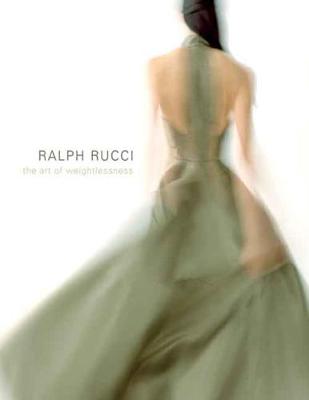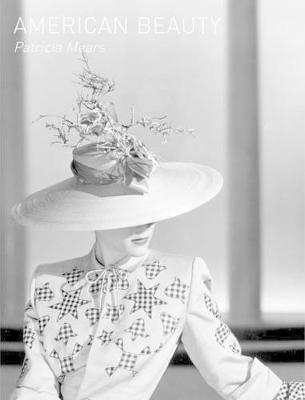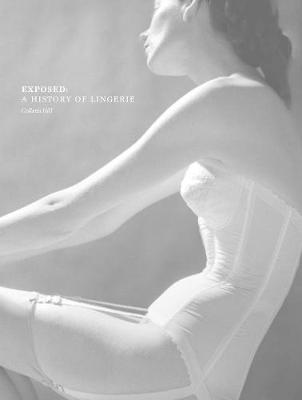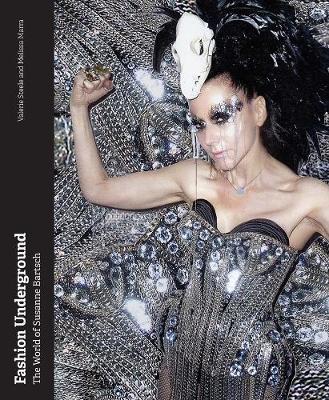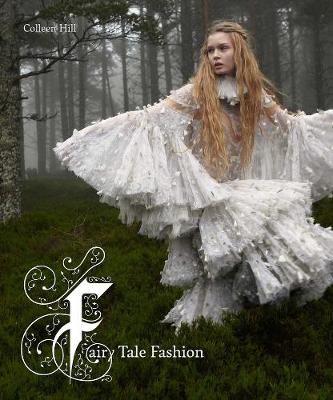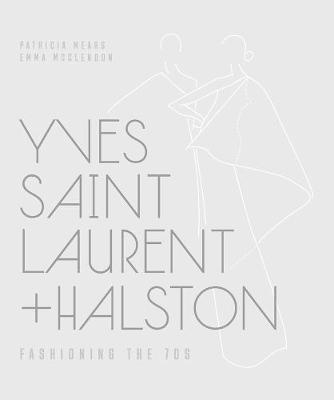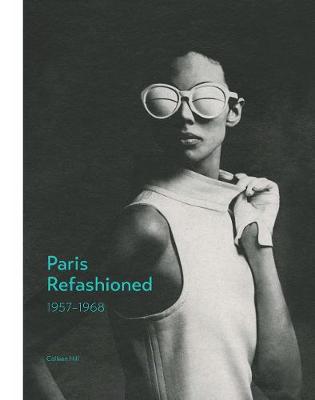Fashion Institute of Technology (YAL)
10 total works
Working quietly and without much public attention for more than 20 years, American fashion designer Ralph Rucci suddenly became a headline topic in 2002, when he was invited to show his collection at the haute couture in Paris—the first American to receive such an invitation since Mainbocher in the 1930s. This sumptuously illustrated book is the first to explore in depth Rucci’s life and work, including the inspirations behind the extraordinarily beautiful and very expensive clothes he creates.
The contributors to the volume explore many aspects of Rucci’s genius and emergence as a master in the fashion world. Valerie Steele places his life and work in the context of modern fashion history and discusses his connections with such figures as Balenciaga and Halston. Patricia Mears closely examines the garments he designs, reveals what makes them so special, and considers influences on his work. Clare Sauro describes Rucci’s accessories, which complete the aesthetic vision that his fashions embody. The book is enriched with more than 100 photographs that include runway images, fashion shots of Rucci’s clients, Chado Ralph Rucci garments from the collection of The Museum at the Fashion Institute of Technology and from his own archives, as well as various inspirational objects and fashions.
Published in association with The Museum at the Fashion Institute of Technology
Exhibition Schedule:
The Museum at the Fashion Institute of Technology, New York (January – May 2007)
Japan Fashion Now
by Valerie Steele, Patricia Mears, Yuniya Kawamura, and Hiroshi Narumi
A visually stunningexploration of how contemporary Japanese fashion and visual culture are transforming the way we experience our world
Scholars have long acknowledged the significance of the Japanese “fashion revolution” of the 1980s, when avant-garde designers Issey Miyake, Yohji Yamamoto, and Rei Kawakubo of Comme des Garçons introduced a radically new conception of fashion. But what has happened in the years since then?
Lavishly illustrated, Japan Fashion Nowwill be the first book to explore how Japanese fashion has evolved in recent years. During this time, Japanese pop culture has swept the world, as young people everywhere read manga, watch anime, and play video games. Japan has had a profound impact on global culture, often via new media.
With essays by Valerie Steele (“Is Japan Still the Future?”), Patricia Mears (“Fashion Revolution”), Hiroshi Narumi (“Japanese Street Style”), and Yuniya Kawamura (“Japanese Fashion Subcultures”), Japan Fashion Now explores how the world of fashion has been transformedbycontemporary Japanese visual culture.
Published in association with The Museum at the Fashion Institute of Technology, New York
Exhibition Schedule:
The Museum at the Fashion Institute of Technology, New York(09/17/10-01/08/11)
An astute exploration of the most outrageous shoe designs of the 21st century
This fabulously illustrated book explores western culture’s fascination with extravagant and fashionable shoes. Over the past decade, shoe design has become increasingly central to fashion, with fashion companies paying ever more attention to shoes and other accessories. High-heeled shoes, in particular, have become the fashion accessory of the 21st century.
Co-written by one of the world’s leading historians of fashion and an authority on fashion accessories, the book features approximately 150 pairs of the most extreme and ultra-fashionable styles of the past 12 years, including work by such prominent designers as Manolo Blahnik, Pierre Hardy, Christian Louboutin and Bruno Frisoni for Roger Vivier, as well as shoes by influential design houses such as Azzedine Alaïa, Balenciaga, Alexander McQueen, and Prada. Avant-garde styles by up-and-coming designers such as Japan’s Kei Kagami and Noritaka Tatehana are also highlighted.
Shoe Obsession examines recent extreme and fantastical shoe styles in relation to the history of high heels, the role of shoes as a reflection of their wearers’ personality traits, and the importance of shoes in art and exhibitions. The book is lavishly illustrated with full-color photographs of spectacular contemporary shoe designs.
Published in association with The Fashion Institute of Technology, New York
Exhibition Schedule:
The Fashion Institute of Technology, New York
(02/07/13-04/13/13)
A stunning tribute to great American fashion designers—both the famous and little known—of the 20th century
This beautifully illustrated book is the first to examine the relationship between innovation and aesthetics as expressed by American couturiers and fashion designers from the late 1910s to the present day. The book, which accompanies a major exhibition at The Museum at the Fashion Institute of Technology, New York, reveals that great design and great style were consistent elements in the work of American’s best fashion designers.
Patricia Mears introduces many great forgotten figures, as well as many familiar names: work by lesser-known figures such as Jessie Franklin Turner, Ronaldus Shamask, and Charles Kleibecker is discussed alongside pieces by more celebrated creators, such as Halston and Charles James; work by designers of the past is juxtaposed with that of present-day designers such as Rick Owens, Yeolee Teng, and Maria Comejo. James’s grand and structurally imposing gowns from the 1950s appear alongside contemporary Infantas by Ralph Rucci; the section on draping juxtaposes 1930s gowns by Elizabeth Hawes and Valentina with more contemporary garments by Jean Yu and Isabel Toledo; clothing cut into pure geometric shapes like circles, triangles, and rectangles is illustrated by World War I–era teagowns by Jessie Franklin Turner, Claire McCardell’s mid-century rompers garments, and modern sportswear by Yeohlee and Shamask.
While the United States may be best known worldwide for its casual mass-marketed garments, Mears demonstrates that artistry, innovation, and flawless construction are the true marks of American fashion.
Exhibition Schedule:
The Museum at the Fashion Institute of Technology (11/09 – 1/10)
Lingerie is a subject of enduring fascination. As the final barrier to the fully nude body, it is simultaneously modest and erotic. This compelling and eye-catching publication surveys lingerie from the mid-18th century to the present, covering a broad range of foundation garments, intimate apparel, and lounging clothes—from bras and corsets to slips, peignoirs, and tea gowns. All pieces are gorgeously illustrated in color.
Stunning historical garments from well-known fashion houses such as Christian Dior are included, as is risqué contemporary lingerie by labels such as Agent Provocateur. When viewed as a whole, these pieces illustrate important developments in fashion over time, such as changes in silhouette, shifting ideals of propriety, and advancements in technology.
While a number of the pieces featured in the book were worn hundreds of years ago, the majority date from the 20th century. It was at that time that lingerie started to become as beautiful and alluring as it was functional. Authors Colleen Hill and Valerie Steele show that the decorative, highly feminine styles from the early 1900s set a new precedent for the importance of lingerie in women’s private lives—a concept that remains important to many women today.
Published in association with The Fashion Institute of Technology
Exhibition Schedule:
The Museum at The Fashion Institute of Technology
(06/03/14–11/15/14)
Fashion Underground
by Valerie Steele, Melissa Marra, Susanne Bartsch, and Waleed Khairzada
Susanne Bartsch has been the queen of New York City nightlife since the 1980s when she first became famous for spectacular parties, where a diverse crowd brought fashion to the level of performance art. Her most important party was undoubtedly the 1989 Love Ball, a pioneering AIDS benefit that brought the fashion world together. The Love Ball was followed by other parties, which ultimately raised more than $2.5 million for AIDS research and advocacy. Over the years, Bartsch has had a profound impact on the world of fashion and visual culture. She has been a retailer, a fashion show organizer, a muse, and a catalyst. As Holly Brubach wrote in her 1991 New Yorker profile, “If there is a theme that runs through the various jobs Bartsch has held, it is perhaps a fascination with the way people present themselves—with the clothes and the part they play in people’s imagination.”
Fashion Underground: The World of Susanne Bartsch features approximately 80 looks from Bartsch’s personal collection of clothing and accessories, including designs by Rachel Auburn, Body Map, Leigh Bowery, John Galliano, Jean Paul Gaultier, Thierry Mugler, Mr. Pearl, Vivienne Westwood, Zaldy, and many others. Dazzling color photographs allow readers to witness the incredible art of transformation.
Published in association with The Fashion Institute of Technology
Exhibition Schedule:
The Museum at the Fashion Institute of Technology, New York
(September 2015–December 2015)
Fairy Tale Fashion
by Colleen Hill, Patricia Mears, Ellen Sampson, and Kiera Vaclavik
Dress plays a crucial role in fairy tales, signaling the status, wealth, or vanity of particular characters, and symbolizing their transformation. Fairy tales often provide little information beyond what is necessary to a plot, but clothing and accessories are frequently vividly described, enhancing the sense of wonder integral to the genre. Cinderella’s glass slipper is perhaps the most famous example, but it is one of many enchanted or emblematic pieces of dress that populate these tales.
This is the first book to examine the history, significance, and imagery of classic fairy tales through the lens of high fashion. A comprehensive introduction to the topic of fairy tales and dress is followed by a series of short essays on thirteen stories: “Cinderella,” “Little Red Riding Hood,” “The Fairies,” “Sleeping Beauty,” “Beauty and the Beast,” “Snow White,” “Rapunzel,” “Furrypelts,” “The Little Mermaid,” “The Snow Queen,” “The Swan Maidens,” Alice's Adventures in Wonderland, and The Wonderful Wizard of Oz. Generously illustrated, these stories are creatively and imaginatively linked to examples of clothing by Comme des Garc¸ons, Dolce and Gabbana, Charles James, and Alexander McQueen, among many others.
Published in association with The Fashion Institute of Technology, New York
Exhibition Schedule:
The Museum at The Fashion Institute of Technology, New York
(01/15/16–04/16/16)
This fascinating publication is the first to examine side by side the careers and work of two of the biggest names in 20th-century fashion, Yves Saint Laurent (1936–2008) and Halston (1932–1990). Their designs—chic, sexy, and glamorous—came to exemplify the 1970s, a singular and dynamic era in fashion history. Inspired by menswear, foreign cultures, and wide-ranging historical periods, and employing new fabrics, YSL and Halston together crafted a new and distinctly modern way of dressing.
Moreover, although their output differed and they were based on different continents, the two designers shared many career parallels. A visual timeline of the designers’ lives illustrates how their rises and falls, from the 1950s to their respective struggles in the 1980s, were surprisingly in sync. Engaging passages by Patricia Mears and Emma McClendon discuss the social, cultural, and economic factors that influenced both designers, and their subsequent impact on fashion—including the rise of the star designer as personality, the cult of celebrity, and the creation of the fashion conglomerate. The authors also address the importance of color, cutting-edge materials, innovative construction techniques, accessories, and perfume to both designers’ aesthetics. Remarkable photographs of the designers and their garments round out this essential volume on two figures who made an indelible mark on fashion history.
Published in association with the Fashion Institute of Technology
Exhibition Schedule:
The Museum at The Fashion Institute of Technology, New York
(02/05/15–04/18/15)
A spectacular showcase of the inimitable style and haute couture collection of fashion icon Daphne Guinness
“She is one of the—if not the—most stylish women living,” says designer and film director Tom Ford, speaking of Daphne Guinness, the subject and co-author of this extraordinary book. From her platinum-and-black striped hair to her towering 10-inch heels, her to-die-for couture collection and amazing diamond jewelry, Daphne Guinness embodies the rarified, personal style of a true fashion icon. A designer, editor, model, muse, and stylist, Ms. Guinness is renowned for the way she uses fashion to transform herself. As her friend, the art historian John Richardson puts it: “She is the object of her own creativity. Her persona is her own masterpiece.”
Karl Lagerfeld of Chanel, Valentino, Azzedine Alaia, and the late Alexander McQueen are among the many great fashion designers whose spectacular garments form part of Daphne Guinness's personal collection of haute couture. But Ms. Guinness is far more than a great couture client, she is also an inspiration to designers because of her fearless personal style. In an extended interview with the curator and fashion historian Valerie Steele, Daphne Guinness explains the origins and characteristics of her style. She also discusses her friendships and collaborations with other creative fashion personalities from the late Isabella Blow to the photographer Steven Klein and the jeweler Shaun Leane. Sumptuously illustrated with both high-fashion photographs and paparazzi shots, the book is a spectacular showcase for the world of Daphne Guinness.
Published in association with The Fashion Institute of Technology, New York
Exhibition Schedule:
The Fashion Institute of Technology, New York
(09/16/11-01/31/12)
The 1960s was one of the most exciting periods in fashion history, as shifting cultural paradigms were embraced by a generation of designers that challenged conventions and reinvented the fashion industry. This compelling volume focuses on the important but too often dismissed fashions that were created in Paris during this time. From the early couture designs of Yves Saint Laurent that initiated a trend toward a more relaxed and youthful style, to the popularity of ready-to-wear fashions by Emmanuelle Khanh – part of a new group known as the stylists – this book traces the development of Parisian fashion during the 1960s and its continuing legacy.
Colleen Hill features eye-catching images from Elle and Vogue, as well as stunning examples of fashion from The Museum at FIT’s world-class collection. She provides an in-depth look at the combined influences of French haute couture, ready-to-wear, and popular culture during this era. In doing so, she describes how the dominance of haute couture was challenged by the ready-to-wear movement, resulting in the rise of a vibrant, youthful, and modern aesthetic in Parisian fashion.
Published in association with The Fashion Institute of Technology, New York
Exhibition Schedule:
The Museum at the Fashion Institute of Technology, New York
(February–April 2017)
